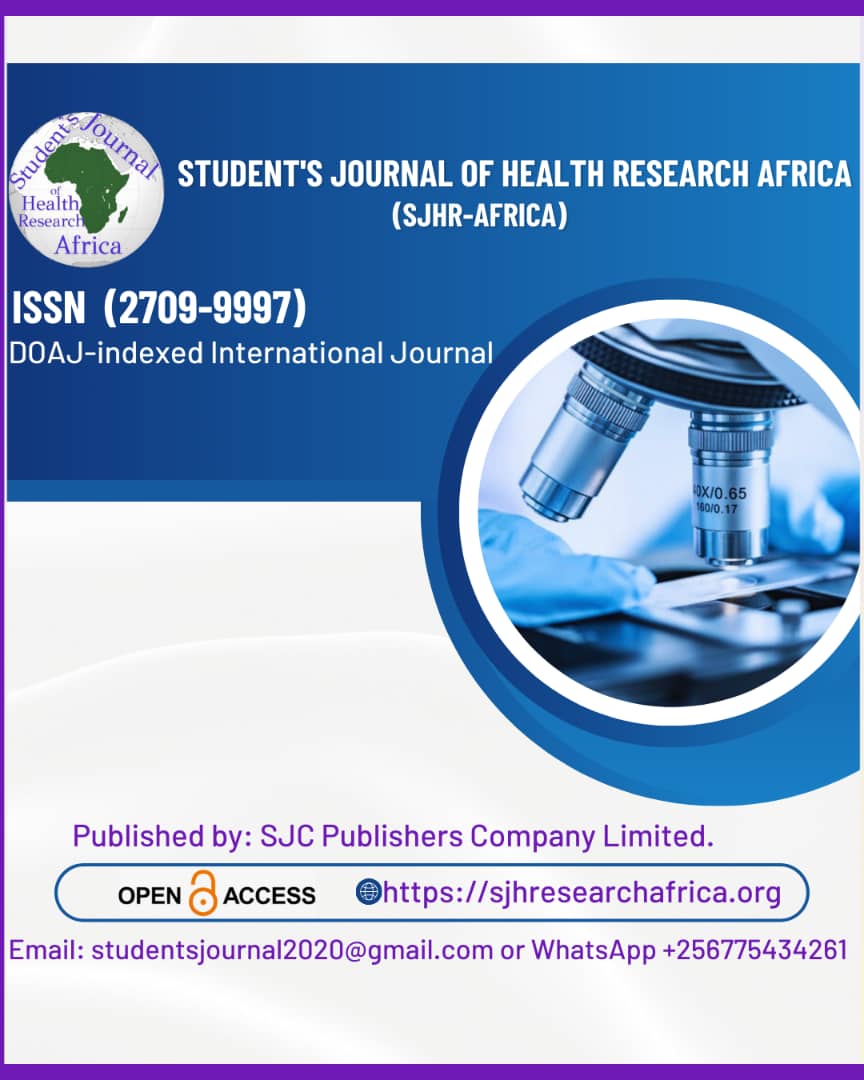Assessing the prevalence of extra-pulmonary tuberculosis among Human Immunodeficiency infected patients at a hospital in KwaZulu-Natal, South Africa
DOI:
https://doi.org/10.51168/sjhrafrica.v6i10.2093Keywords:
Extrapulmonary tuberculosis, huma immunodeficincy virus, coinfection, prevalence, immunocompromised individuals, infectious disease implicationsAbstract
Introduction: The co-epidemic of Human Immunodeficiency Virus (HIV) and Tuberculosis (TB), Extrapulmonary Tuberculosis (EPTB) pose a major health issue in KwaZulu Natal (KZN) South Africa (SA). Despite improvements in HIV care, EPTB continues to affect immunocompromised individuals. Therefore, this study aimed to bridge this knowledge gap by determining the prevalence, and risk factors associated with EPTB prevalence among HIV-infected patients in KZN.
Methodology: Patient results for those tested for EPTB from January to December 2022, were examined. Key variables included demographic information including age, gender, geographic location. HIV viral load, CD4 count, and GeneXpert tuberculosis were the test results analysed. To ensure accuracy, the dataset underwent rigorous cleaning to exclude incomplete records and duplicates. Microsoft Excel 2019 facilitated descriptive and graphical analysis to illustrate trends. Spearman's correlation was used to examine associations among continuous variables, with statistical significance assessed using p-values and confidence intervals
Results: Among 609 analyzed HIV-positive patient results, 86 (14.1%) had EPTB. Most cases 382 (62.7%) originated from the uGu district, with the highest prevalence observed among males aged 40-64 years. Lymphadenitis was the most common EPTB manifestation. Additionally, detectable viral loads and moderately suppressed CD4 counts indicated advanced HIV progression, increasing susceptibility to EPTB co-infections.
Conclusion: This study shows a significant burden of EPTB among HIV-infected individuals in KZN, especially in older patients with high viral loads. Targeted interventions for early detection, screening programs, and gender-specific approaches are crucial to reducing morbidity and mortality.
Downloads
Published
How to Cite
Issue
Section
License
Copyright (c) 2025 Mr. Sibongakonke Siphelele Mlambo, Ms. Nokukhanya Thembane, Dr. Ziningi Nobuhle Jaya

This work is licensed under a Creative Commons Attribution-NonCommercial-NoDerivatives 4.0 International License.





















